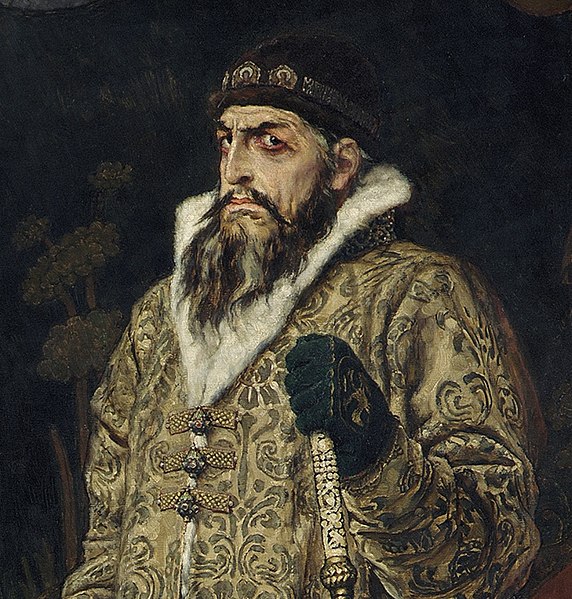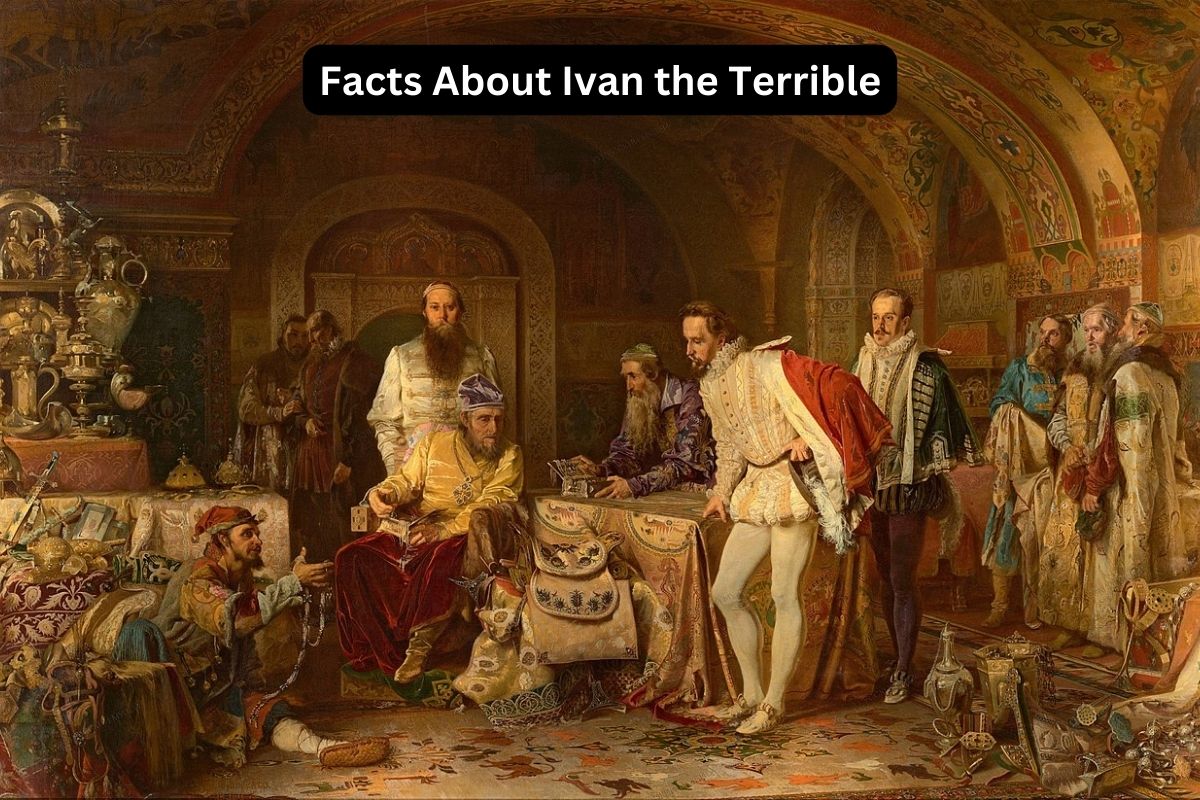In the annals of Russian history, few figures loom as large and enigmatic as Ivan the Terrible. Renowned for his military conquests, centralizing reforms, and architectural patronage, Ivan’s reign was also marred by brutality, repression, and personal tragedy.
This article delves into the multifaceted legacy of Ivan IV, exploring his rise to power, his controversial policies such as the oprichnina, and the enduring debate over his historical significance.
By examining Ivan’s complex personality and the tumultuous era in which he ruled, we seek to unravel the layers of myth and misconception surrounding one of Russia’s most polarizing rulers.
Ivan the Terrible Facts
1. Ivan IV was born in 1530 and became Grand Prince of Moscow in 1533
Ivan IV, commonly known as Ivan the Terrible, was born in 1530 in Moscow, Russia. His father, Vasily III, died when Ivan was only three years old, leaving him as the Grand Prince of Moscow under the regency of his mother, Elena Glinskaya, until her death in 1538.
Also Read: Ivan the Great Accomplishments
Ivan’s early years were marked by power struggles among the Russian nobility and the influence of various factions at court.

2. He was crowned the first Tsar of Russia in 1547
In 1547, at the age of 16, Ivan IV was crowned the first Tsar of Russia after a grand ceremony in the Moscow Kremlin.
This coronation marked a significant moment in Russian history, as it officially established the title of Tsar (derived from the Latin Caesar) and solidified Ivan’s authority as the supreme ruler of Russia.
The title of Tsar implied a divine right to rule, elevating Ivan above previous Russian rulers who held the title of Grand Prince.
3. Ivan expanded Russian territory through military conquests
Ivan’s reign was characterized by ambitious military campaigns aimed at expanding Russian territory and influence. One of his most notable achievements was the conquest of the Khanate of Kazan in 1552, a significant victory that brought vast territories of the Volga region under Russian control.
Also Read: Timeline of Ivan the Terrible
This conquest not only expanded Russia’s borders but also secured access to lucrative trade routes and natural resources. Following the conquest of Kazan, Ivan embarked on further military campaigns, including the conquest of the Khanate of Astrakhan in 1556, which further solidified Russian dominance in the region.
These military successes earned Ivan the epithet “the Terrible,” though in the context of the time, it connoted awe-inspiring or formidable rather than solely negative connotations.
4. He instituted reforms to centralize power
Ivan the Terrible implemented a series of reforms aimed at centralizing power in Russia and strengthening his own authority. One of his most significant policies was the establishment of the oprichnina in 1565.
This policy involved dividing the Russian state into two distinct territories: the oprichnina, which was directly controlled by Ivan and his loyal supporters, and the zemshchina, which remained under the authority of the boyars (nobles).
The oprichnina served as a means for Ivan to consolidate power by confiscating land from boyars deemed disloyal and redistributing it to his trusted followers, thereby weakening the influence of the traditional noble elite.

5. The oprichnina was marked by terror and oppression
The oprichnina period was marked by widespread terror and oppression carried out by Ivan’s personal paramilitary force known as the oprichniki.
Clad in distinctive black attire and mounted on black horses, the oprichniki were tasked with enforcing Ivan’s will and rooting out perceived enemies of the state.
They engaged in acts of violence, torture, and mass executions, targeting not only political rivals but also innocent civilians. The reign of terror under the oprichnina led to widespread fear and instability throughout Russia, as Ivan sought to eliminate any opposition to his rule.
6. Ivan commissioned the construction of St. Basil’s Cathedral
Despite the turmoil of his reign, Ivan the Terrible also left a lasting architectural legacy, most notably with the construction of St. Basil’s Cathedral in Moscow.
Commissioned by Ivan in the 1550s to commemorate the capture of Kazan and Astrakhan, St. Basil’s Cathedral is renowned for its distinctive onion domes, vibrant colors, and intricate architectural design.
Originally known as the Cathedral of the Intercession of the Virgin by the Moat, the cathedral’s unique appearance has made it an iconic symbol of Russian architecture and a UNESCO World Heritage Site.
Completed in 1561, St. Basil’s Cathedral remains one of Moscow’s most recognizable landmarks and a testament to Ivan’s patronage of the arts despite the tumultuous nature of his reign.
7. He faced personal tragedies, including the deaths of his wife and son
Ivan the Terrible’s reign was marked by personal tragedies that deeply impacted him. In 1560, Ivan’s beloved wife, Anastasia Romanovna, died under mysterious circumstances.
Her death devastated Ivan, as she had been a stabilizing influence on him and a beloved figure among the Russian people. Following Anastasia’s death, Ivan’s mental state deteriorated, leading to bouts of paranoia and increasing cruelty.
Moreover, in 1581, Ivan’s son and heir, also named Ivan, died in a violent confrontation with his father. This event, known as the “Ivanovskaya Sloboda Massacre,” occurred during a heated argument between father and son, resulting in Ivan IV striking his son with a scepter, which ultimately proved fatal.
The loss of both his wife and son further contributed to Ivan’s reputation as a troubled and unpredictable ruler.

8. Ivan abdicated the throne in 1564 but returned a year later
In 1564, overwhelmed by grief and frustration with the challenges of governing, Ivan the Terrible shocked his subjects by abdicating the throne and retiring to a monastic life. His sudden departure plunged Russia into a period of political uncertainty, as competing factions vied for power in his absence.
However, Ivan’s departure proved short-lived, as popular unrest and external threats compelled him to return to the throne in 1565. Despite his initial attempt to withdraw from political life, Ivan’s sense of duty and desire to maintain control over Russia ultimately led to his reinstatement as Tsar.
9. His later years were marked by further violence and repression
Ivan the Terrible’s later years were marked by a further descent into despotism and cruelty. Fueled by paranoia and a desire for absolute power, Ivan unleashed a wave of terror upon his subjects, purging suspected traitors and political opponents with ruthless efficiency.
Under Ivan’s rule, dissent was met with brutal reprisals, including torture, execution, and exile. The oprichnina, which had initially been established to consolidate power, devolved into a tool of oppression and terror, instilling fear and obedience among the Russian populace.
10. Ivan died in 1584, leaving a mixed legacy in Russian history
Ivan the Terrible’s reign left a complex and enduring legacy in Russian history. While he is credited with expanding Russian territory, centralizing power, and promoting cultural and architectural achievements, his rule was also marked by brutality, repression, and instability.
Ivan’s reputation as a ruthless and unpredictable ruler has led to conflicting interpretations of his legacy, with some viewing him as a visionary leader who laid the foundations for Russia’s modernization, while others condemn him as a tyrant whose reign was characterized by violence and oppression.
Despite the controversy surrounding his legacy, Ivan the Terrible remains a figure of historical fascination and debate, reflecting the complexities of power and leadership in Russian history.
